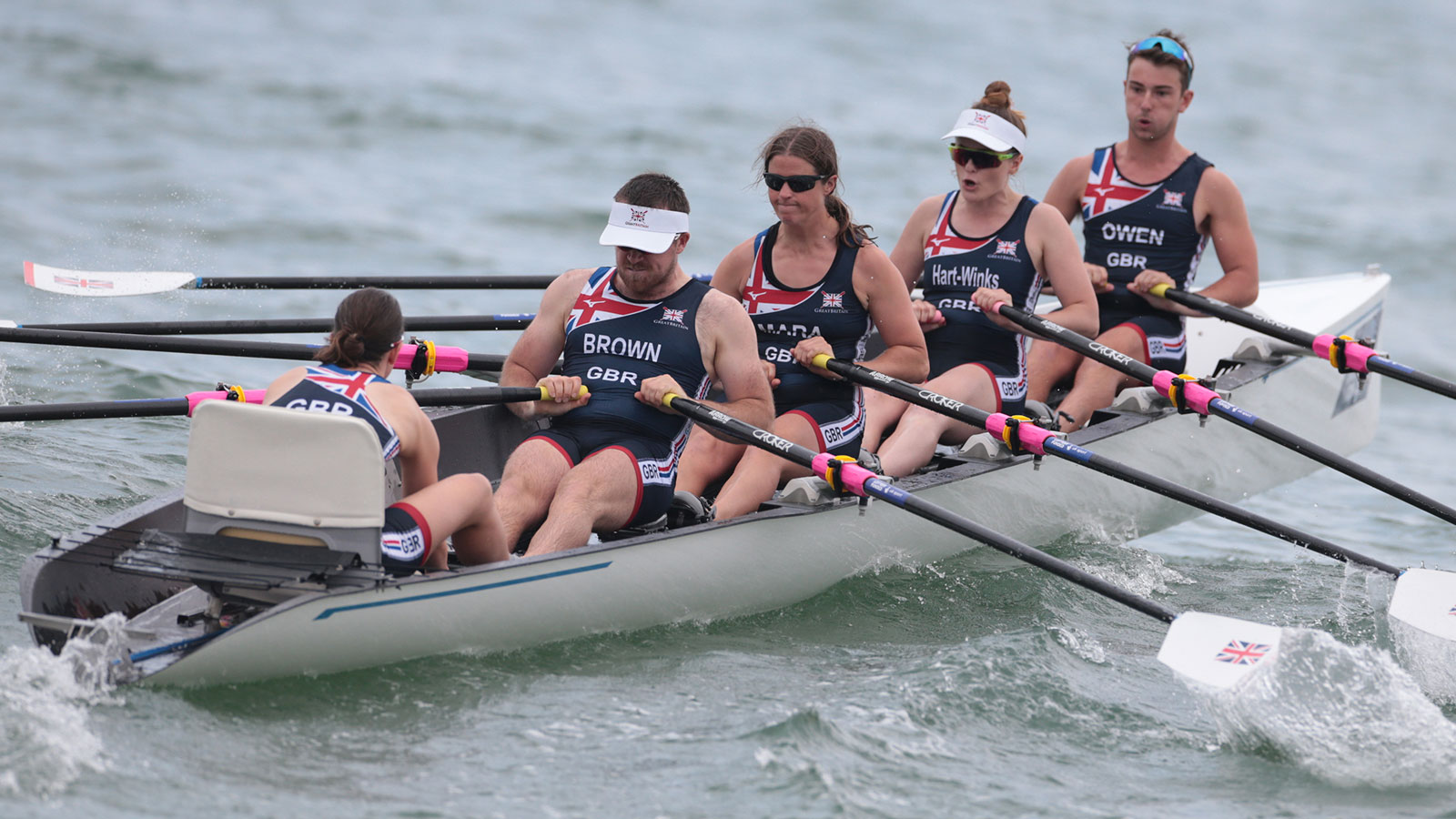
Coastal rowing, a thrilling and dynamic sport, has been gaining popularity worldwide. Unlike traditional rowing, coastal rowing takes place on open water, presenting rowers with unique challenges and exhilarating experiences. As the sport continues to capture the interest of enthusiasts, it's essential to understand the key facts that make coastal rowing a compelling and distinctive discipline. From the rugged beauty of coastal landscapes to the technical skills required to navigate unpredictable waters, coastal rowing offers a blend of athleticism and adventure that sets it apart from traditional rowing. In this article, we'll delve into nine essential facts about coastal rowing, shedding light on its rich history, the specialized equipment involved, and the physical demands placed on rowers. Whether you're a seasoned coastal rower or simply intrigued by this captivating sport, these insights will deepen your appreciation for the unique and invigorating world of coastal rowing.
Key Takeaways:
- Coastal rowing offers a thrilling and challenging experience on open water, showcasing breathtaking scenery and promoting teamwork and inclusivity among athletes.
- The sport continues to gain global recognition and participation, inspiring a deep connection with nature and fostering a sense of environmental stewardship among rowers.
Coastal Rowing is an Exciting Variation of Traditional Rowing
Coastal rowing, also known as open water rowing, is a captivating variation of traditional rowing that takes place on open bodies of water such as seas, oceans, and large lakes. This exhilarating sport offers a unique and challenging experience for rowers, combining elements of endurance, navigation, and adaptability. Coastal rowing has gained popularity for its adventurous nature and the distinct skills it demands from athletes.
Coastal Rowing Boats are Specifically Designed for Open Water Conditions
Coastal rowing boats, also referred to as coastal singles or doubles, are specially crafted to withstand the unpredictable conditions of open water. Unlike traditional rowing boats, coastal rowing boats feature a wider hull, higher freeboard, and a flatter bottom, providing increased stability and buoyancy. These design elements enable rowers to navigate through rough waters and challenging currents, making coastal rowing an exhilarating and dynamic sport.
Coastal Rowing Races Showcase Spectacular Scenery
One of the most captivating aspects of coastal rowing is the breathtaking scenery that serves as the backdrop for races. Competitions are often held in picturesque coastal locations, offering rowers and spectators stunning views of cliffs, beaches, and open waters. This unique blend of athleticism and natural beauty makes coastal rowing events a truly unforgettable experience for participants and observers alike.
Coastal Rowing Requires Exceptional Navigation Skills
Unlike traditional rowing, coastal rowing demands a high level of navigational proficiency from athletes. Rowers must skillfully maneuver through open water, tides, and currents, requiring a deep understanding of maritime navigation principles. This aspect adds an exciting and strategic dimension to the sport, as rowers must adapt to changing conditions and make tactical decisions during races.
Coastal Rowing Promotes Teamwork and Camaraderie
Participating in coastal rowing fosters a strong sense of teamwork and camaraderie among athletes. Rowers must work in harmony to navigate the challenges of open water, relying on effective communication and synchronization to achieve success. This collaborative aspect of coastal rowing creates a supportive and unified environment, enhancing the overall experience for participants.
Coastal Rowing Offers Diverse Racing Formats
Coastal rowing features a variety of racing formats, including time trials, head races, and buoy turn regattas. These diverse formats cater to different skill sets and preferences, adding depth and excitement to the sport. Whether it's the endurance-focused nature of head races or the adrenaline-pumping buoy turn regattas, coastal rowing provides a range of thrilling racing experiences for athletes.
Coastal Rowing Celebrates Inclusivity and Accessibility
This dynamic sport embraces inclusivity and accessibility, welcoming participants of various ages and skill levels. Coastal rowing clubs and organizations prioritize creating an environment where individuals from diverse backgrounds can engage in the sport, fostering a community that values equity and diversity. This commitment to inclusivity contributes to the widespread appeal of coastal rowing.
Coastal Rowing Inspires a Deep Connection with Nature
Engaging in coastal rowing allows athletes to develop a profound connection with the natural world. The sport's reliance on open water environments encourages a deep appreciation for marine ecosystems and the beauty of coastal landscapes. This connection with nature fosters a sense of environmental stewardship among rowers, promoting a sustainable and eco-conscious approach to the sport.
Coastal Rowing Continues to Experience Global Growth and Recognition
In recent years, coastal rowing has garnered increased global recognition and participation, with a growing number of enthusiasts embracing the sport. This expansion is fueled by the allure of open water challenges, the sense of adventure it offers, and the vibrant community surrounding coastal rowing. As the sport continues to gain momentum, it presents exciting opportunities for athletes and enthusiasts worldwide.
In conclusion, the "9 Facts you must know about Coastal Rowing" shed light on the captivating world of open water rowing, highlighting its unique attributes, challenges, and the sense of community it fosters. Whether it's the exhilarating races set against stunning coastal backdrops or the emphasis on teamwork and inclusivity, coastal rowing stands out as a dynamic and enriching pursuit that continues to inspire individuals around the globe.
Conclusion
In conclusion, coastal rowing offers a unique and exhilarating experience for both athletes and spectators. Its dynamic nature, blending the challenges of open water with the technical aspects of rowing, makes it a captivating sport to watch and participate in. Coastal rowing's growing popularity and inclusivity are evident in the increasing number of clubs and events worldwide. As more people discover the thrill of navigating coastal waters in a rowing shell, the sport's community continues to expand. With its rich history and promising future, coastal rowing stands as a testament to the enduring appeal of water sports and the human spirit of adventure.
FAQs
What are the main differences between coastal rowing and traditional rowing?Coastal rowing takes place on open water, such as lakes, rivers, and oceans, and involves navigating through waves and currents. In contrast, traditional rowing typically occurs on calm, flat water, such as in a rowing tank or on a river with minimal disturbances.
Is coastal rowing suitable for beginners?Yes, coastal rowing can be suitable for beginners, as it offers a thrilling yet accessible entry point into the world of rowing. The dynamic nature of coastal waters provides a unique challenge for novices and seasoned rowers alike, fostering skill development and a deep appreciation for the sport.
Was this page helpful?
Our commitment to delivering trustworthy and engaging content is at the heart of what we do. Each fact on our site is contributed by real users like you, bringing a wealth of diverse insights and information. To ensure the highest standards of accuracy and reliability, our dedicated editors meticulously review each submission. This process guarantees that the facts we share are not only fascinating but also credible. Trust in our commitment to quality and authenticity as you explore and learn with us.


